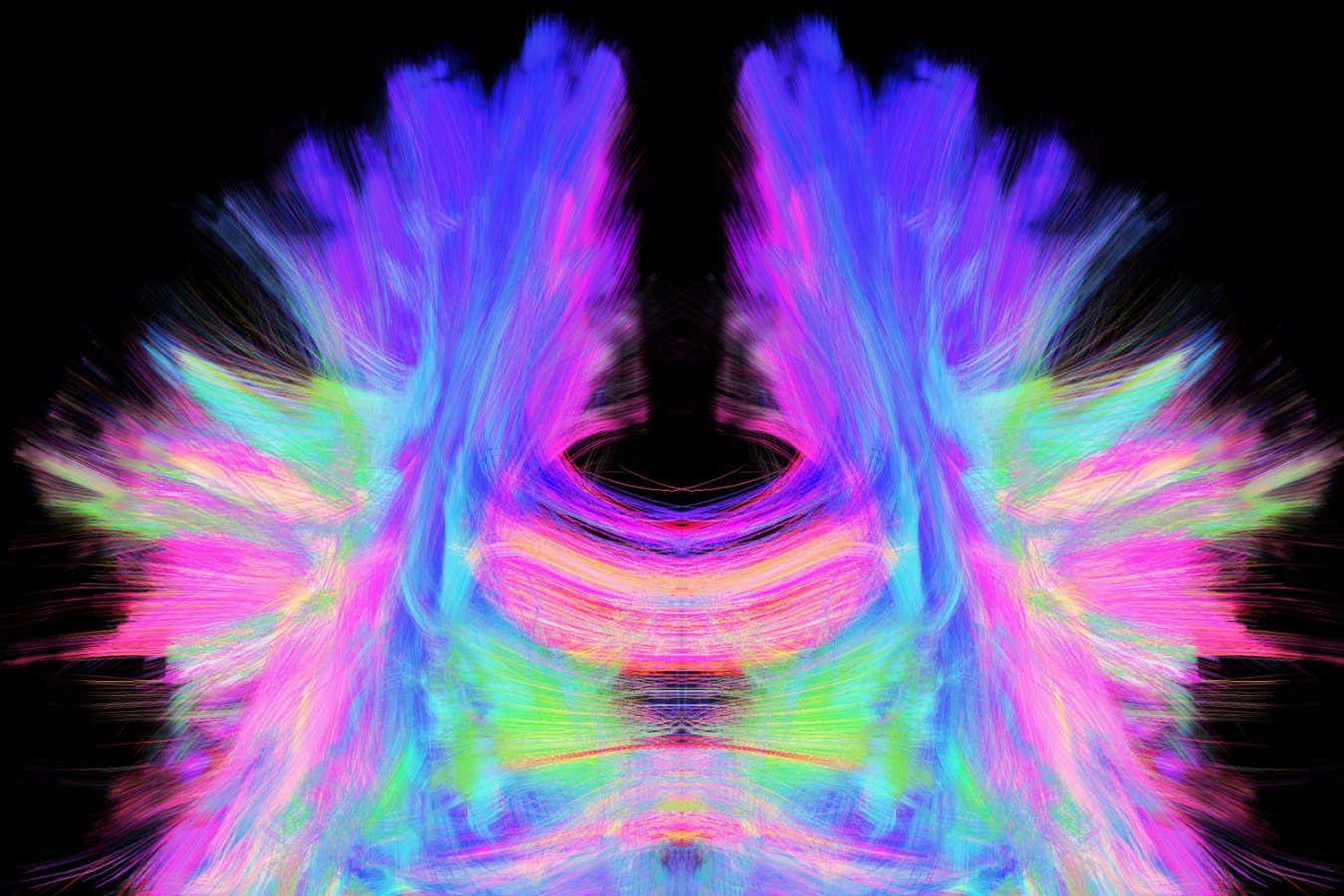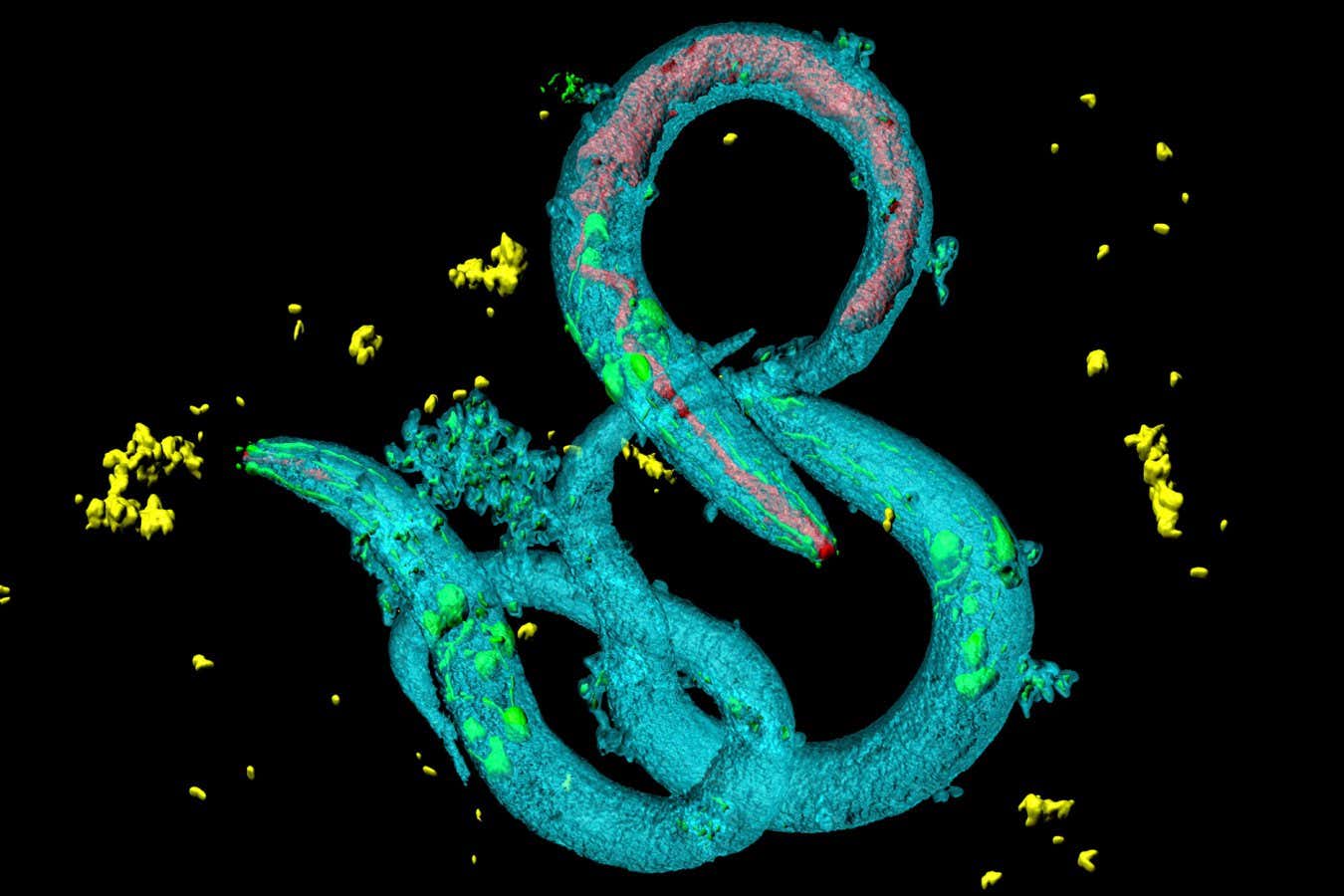
The human brain has trillions of connections
Sherbrooke Connectivity Imaging Lab/Connect Images/Alamy
If we can fully map the structure of our brains, will we be able to understand how they work? That is the goal of researchers attempting to build a wiring diagram, or connectome, of our neural pathways – but now it seems uncovering the secrets of the brain may not be so simple.
You can think of the connectome as a map of all the possible roads along which neural signals can travel, but now Sophie Dvali at Princeton University and her colleagues have discovered that some of these roads are underused.
The researchers looked at the connectome of the nematode worm Caenorhabditis elegans, and compared it with a record of the worm’s neural signals, which they assembled by stimulating each neuron and tracking how the signal it emitted moved through the connectome. This is possible in the worm because its brain only has around 300 neurons in its entire nervous system.

The nematode worm is far simpler than humans, with its 300 or so neurons shown here in green
Heiti Paves / Alamy Stock Photo
By treating the two datasets as mathematical networks, the team could determine whether groups of neurons that are very densely interconnected in the connectome also tend to exchange a large number of signals. They found that this isn’t always the case.
Dvali says that there were some examples of overlap for high connection density and signal exchange, such as for groups of neurons responsible for how the worm eats, where the two networks matched really well, or neurons involved in how it moves backwards, which is an important manoeuvre for a worm escaping danger. In the latter case, the neurons were very connected in both networks though not in an identical way. But, more generally, there were enough discrepancies that the team says the connectome of an organism isn’t enough to predict all of its behaviour.
Team member Andrew Leifer, also at Princeton University, says that the difference may be because signals between neurons don’t always take the shortest path, and there are also known cases where neurons can communicate in ways beyond the “wires” that connect them. “We’re used to using the connectome for guiding our research, and often it’s very helpful and informative, but in many cases there’s so many connections that we wished we had more information,” he says.
“Connectomics data is often criticised as, ‘Oh, you get only structure. You don’t get behaviour.’ And this paper is really probing that question to what degree we can [connect the two],” says Albert-László Barabási at Northeastern University in Massachusetts.
Next, the researchers want to expand their study to account for how signals spread through the connectome when multiple neurons get stimulated simultaneously, and to look at more complex animals like a fruit fly larva, which has the largest whole-brain connectome described to date. “We are under a revolution right now of mapping out the brain,” says Barabási.
Topics:
Source link : https://www.newscientist.com/article/2497291-mapping-the-structure-of-the-brain-doesnt-fully-explain-its-function/?utm_campaign=RSS%7CNSNS&utm_source=NSNS&utm_medium=RSS&utm_content=home
Author :
Publish date : 2025-09-23 18:00:00
Copyright for syndicated content belongs to the linked Source.





